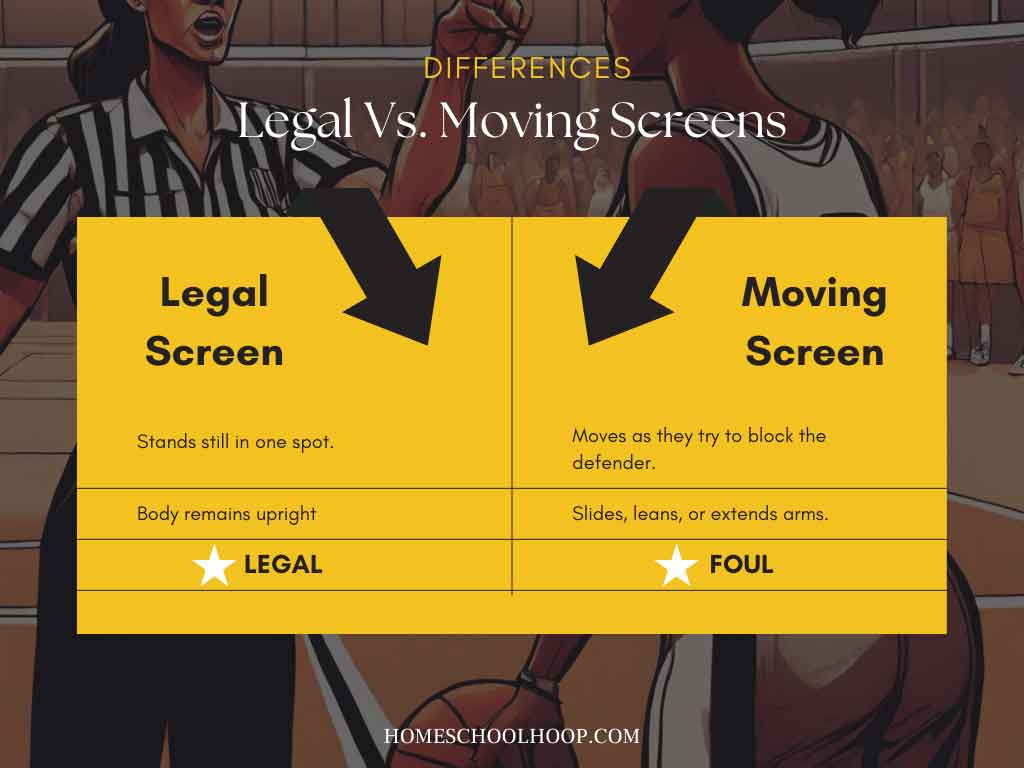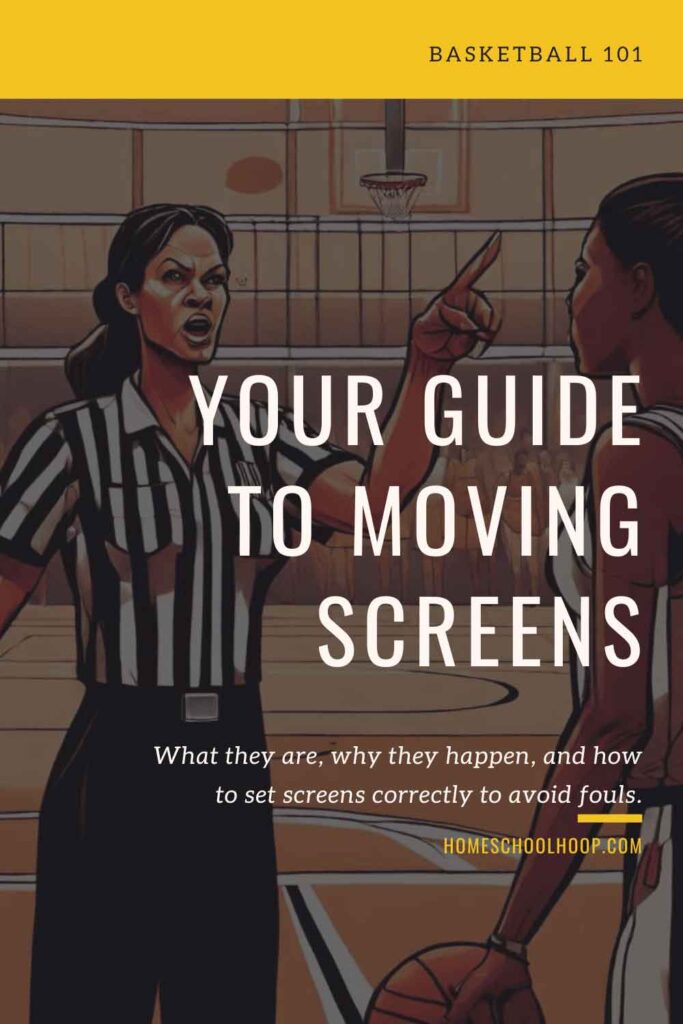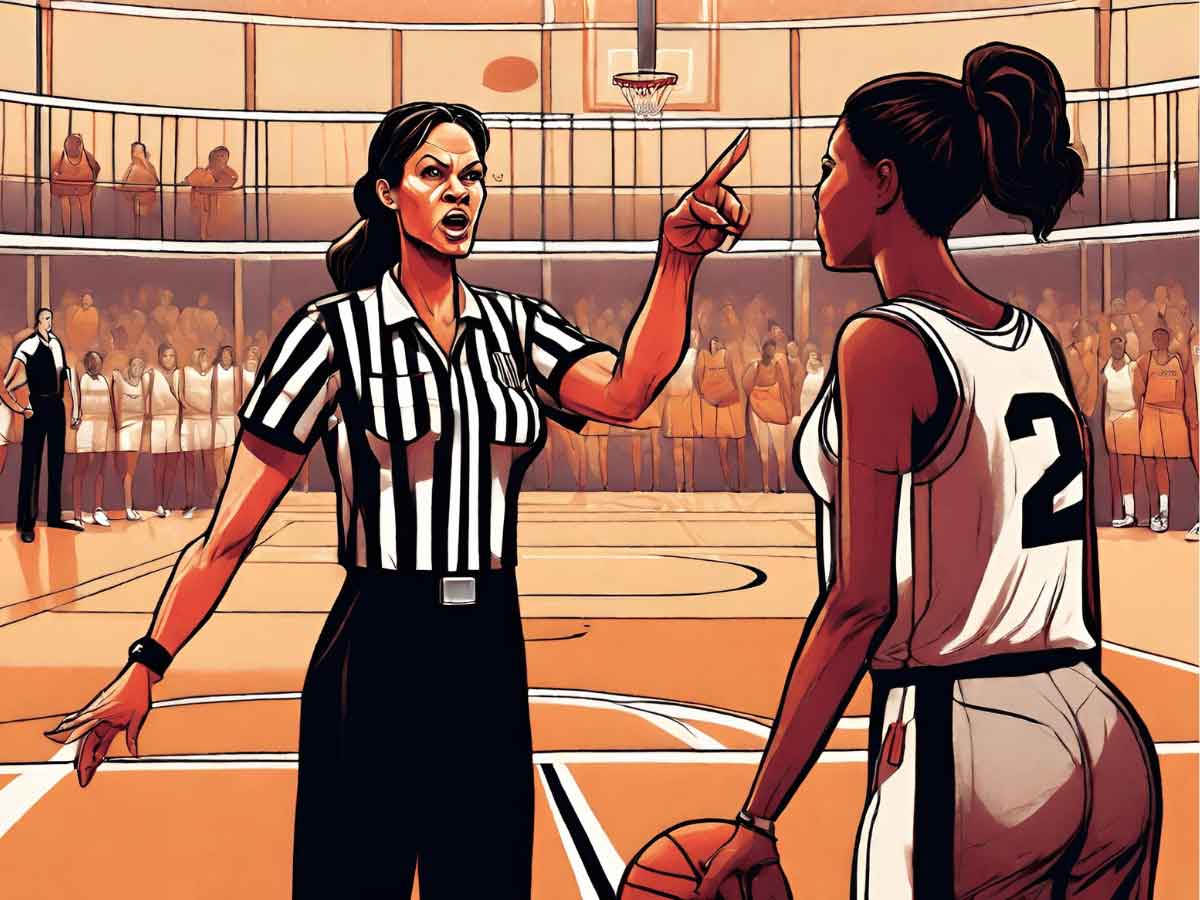A moving screen, often misunderstood, can derail an offensive possession and change the court of a game.
Key Takeaways:
- Definition: A moving screen in basketball is an illegal play when the player setting the screen moves to better block the defender, without maintaining a set position.
- Penalties: If a player commits a moving screen, their team gets a foul and loses control of the ball.
- How to Avoid It: Screeners must stay in a stable stance and keep their body straight, without leaning or extending the arms or legs.
In this article, we’ll dive deep into the basketball moving screen, shedding light on what it is, and why it happens, and offer guidance on how to set screens correctly.
What is a Moving Screen in Basketball?
In basketball, setting screens is a strategy players use to create space for their teammates to get open or score. But, not all screens are created equal. There’s a fine line between an illegal screen and a legal one.
A moving screen is one of the most common types of illegal screens. Instead of the player setting the screen remaining vertical and standing firmly in one spot, they move as they try to block the defender.
Moving screens can look like this:
- Sliding: The player shifts to the side to bump into the defender.
- Leaning: They lean forward, left, or right, instead of standing straight.
- Stretching: They move or stretch out their arms or legs to block the opponent.
All of these movements result in a moving screen, leading to a foul.

A stationary, legal ball screen or off-ball screen can help a team execute an offensive strategy. But, a moving screen puts a team at a disadvantage by causing a foul and loss of possession.
Legal Requirements for Setting a Screen
Setting a screen can be a powerful offensive move when done legally and without moving. To make sure the screen is effective and also within the rules, players need to meet certain requirements.
The key to a legal screen lies in how you move – or more importantly, how you don’t move.
How to Set a Legal, Non-Moving Screen
- Find Your Spot: Choose the right spot on the court to set the screen. This position should be square and in the direct pathway of the defender.
- Stand Firm: Once you’re in position, commit. Keep your feet shoulder-width apart to stay legal and balanced.
- Keep Your Body Straight: Your body should be upright and vertical. Avoid leaning forward, backward, or sideways as the defender comes closer.
- Arms and Legs In: Keep your arms and legs within the vertical plane of your body.
- Commit to Your Position: Don’t be tempted to shift your body position if the defender is going around your screen. You must allow them to do so.
A legal screen is when a basketball player stays completely still and upright, without moving to block the defender. Any movement, even slight, can turn a legal screen into a moving screen.
These rules are in place at all levels, including the NBA. But, as you can see below, the infraction is not always called.
Common Reasons for Moving Screens
Moving screens is a common mistake in basketball, often occurring in fast-paced games and high-pressure situations. Here’s why moving screens often happen and the scenarios where they are most likely to occur.
Why Do Players Commit Moving Screens?
- Misjudging Timing: Players sometimes move into position too early or too late while trying to set a screen. Or, the ball-handler may take off too early in a pick and roll, setting the screener up for a foul.
- Lack of Awareness: In the heat of the game, players might not realize they’re moving. That’s why practicing screens regularly is so important.
- Over-Eagerness to Block: Trying too hard to block the defender can lead to unintentional movement.
- Poor Communication: Without good communication, a player setting a screen might not coordinate well with their teammate, leading to mistimed movements.
Scenarios Where They Often Occur
- Fast-Break Plays: In fast-paced situations, players might rush to set a back screen or flare screen and move accidentally.
- High-Pressure Defense: Against strong, physical defense, players might try to adjust their position to better block the opponent, resulting in a moving screen.
- End-of-Game Situations: When the game is close, players under pressure might make hasty decisions, leading to mistakes like moving screens.
Penalties for Moving Screens
Moving screens in basketball are fouls, so they have tangible penalties that can directly impact a game’s flow and a team’s success.
What Happens When a Moving Screen is Called?
1. Personal Foul:
- The player who commits the moving screen is charged with a personal foul.
- Accumulating too many personal fouls can lead to a player being benched for foul trouble or even disqualified from the game.
2. Change of Possession:
- After a moving screen foul, the ball is turned over to the opposing team.
- This shift disrupts an offensive play, influences game flow, and gives the opponent an additional chance to score.

FAQs on Moving Screens
Why is a moving screen illegal?
A moving screen is illegal because it gives the offensive team an unfair advantage. By moving, the player setting the screen can block the defender more effectively than allowed.
Can a moving screen be legal under any circumstances?
No, a moving screen is always considered illegal in basketball. The rule states that players must remain stationary when setting a screen. Any movement turns it into a foul.
Does a moving screen count as a turnover?
Yes, a moving screen results in a turnover in basketball. When this foul is called, the ball is given to the opposing team out-of-bounds, near where the foul occurred.
How do referees identify moving screens?
Referees identify moving screens by watching the player setting the screen. If the player shifts position, leans, or extends limbs to block the defender while setting a screen, the referee will call a moving screen.

WHAT DO YOU THINK
Today, you learned about moving screens in basketball.
So we want to know: Do you think the rules on moving screens are fair and well-enforced?
Let us know your thoughts in the comments.


Lisa Bluder at Iowa commented days ago that officials are NOT enforcing moving screen violations without contact — officials even telling her you must run into the moving screen to get the foul call. While this “judgement call” seems *practical*, it does not seem like they are following or enforcing the rule correctly?
Yeah, what the rulebook says and what referees call don’t always align, that’s for sure.